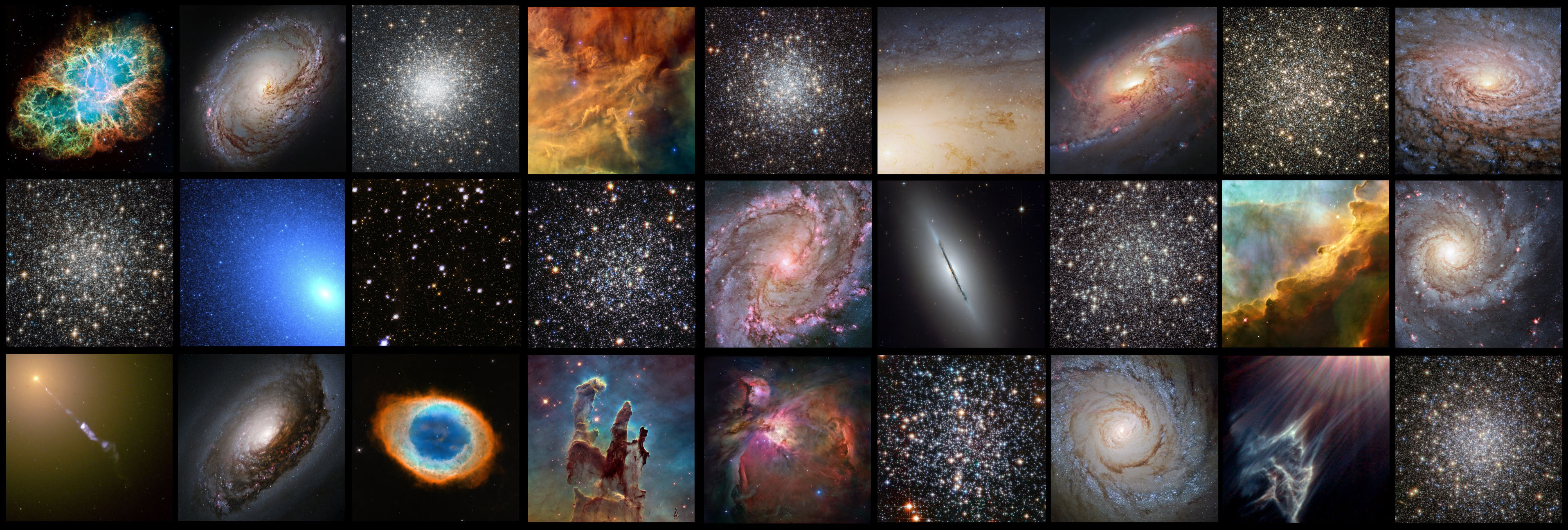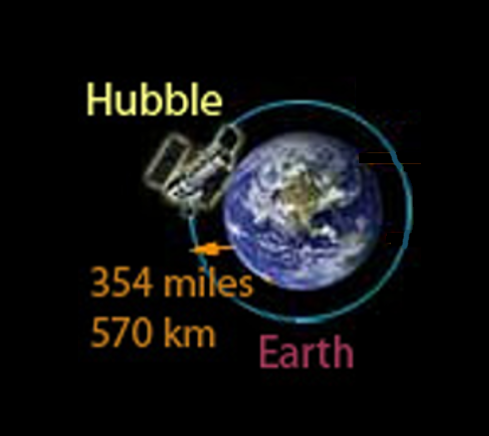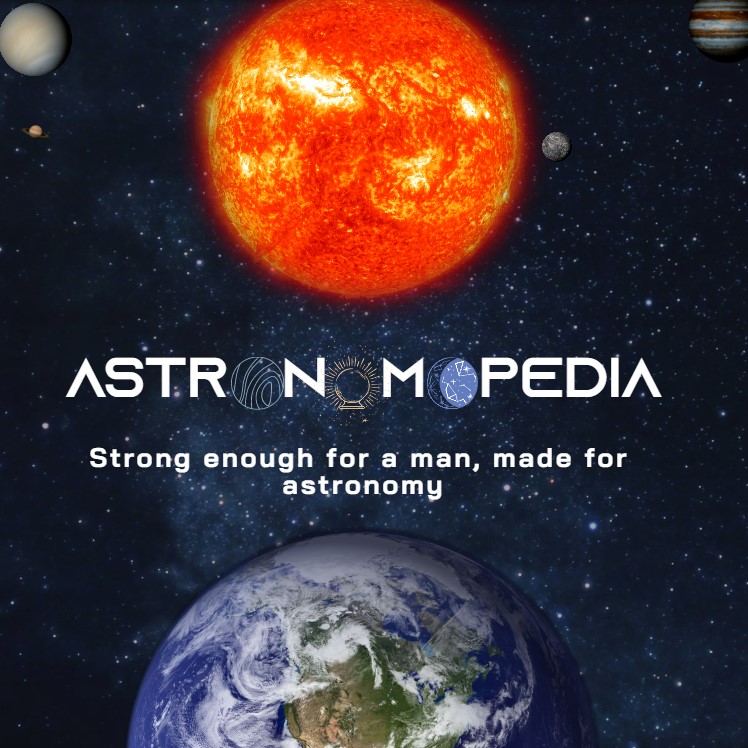

Hubble Space Telescope

What is the Hubble Space Telescope?
The Hubble Space Telescope is a large telescope that is found in space. It was launched in 1990 aboard the Space Shuttle Discovery. The telescope can see ultraviolet light to near Infrared light on the light spectrum allowing the space telescope to capture many stunning images.
What is special about this telescope?
HST is special to the discipline of astronomy because it has discovered tons of new black holes, planetary systems and much more. It has discovered so much that it is impossible to open a book on space without seeing one of the Hubble space telescope's images. It was also the first telescope to see in its range on the light spectrum.
Technical Specifications
Dimensions
HST is 13.2 metres (42.65092 ft) long about the size of a school bus, and its maximum diameter is 4.2 metres (13.12336 ft). It is about the size of a large truck. Its primary mirror is 2.4 meters (6.56168 ft) in diameter, and the secondary mirror is 0.3 meters (1.0 feet) in diameter.
Physico-chemical properties
The Hubble Space Telescope exhibits several notable physico-chemical properties. Firstly, its optical unit, made of graphite epoxy, weighs a mere 252 pounds, thanks to the lightweight nature of the material. This lightweight construction enables the telescope to be launched and operated in space effectively. The Hubble Space Telescope's Optical Telescope Assembly (OTA) is supported by a graphite epoxy skeleton.
The mirrors of the Hubble are coated to optimize their reflectivity across different wavelengths. They are coated with pure aluminum, a layer just three-millionths of an inch thick, to enhance reflectivity for visible light. The layer of aluminum provides the mirror's reflectivity. Additionally, a thin coating of magnesium fluoride, measuring one-millionth of an inch thick, is applied on top of the aluminum. The magnesium fluoride layer serves two purposes: protecting the aluminum from oxidation and increasing reflectivity for ultraviolet light. These coatings ensure optimal performance and sensitivity of the Hubble Space Telescope across the broad spectrum of electromagnetic radiation.

Wavelength
The HST is able to observe a small amount of the infrared spectrum ranging from 0.8 to 2.5 microns, however it is most useful in the ultravariable and visible bands ranging from 0.1 to 0.8 microns.
The image on the right shows the discoveries that Hubble has made using infrared light, ultravariable and visible bands.
Anatomy
The Hubble Space Telescope is constructed with a long tube that remains open at one end, allowing incoming light from the universe to enter. This light is then reflected and focused by mirrors located within the telescope's "eyes." These "eyes" are comprised of several types of instruments that enable the Hubble to observe a wide range of light types, similar to how different organisms perceive different wavelengths of light.

Optics
The optical system of the Hubble Space Telescope is known as the Optical Telescope Assembly (OTA), which employs mirrors to collect and focus light from the cosmos. Unlike traditional telescopes that rely on lenses, Hubble's optics are entirely based on mirrors. The OTA incorporates mirrors that capture infrared, visible, and ultraviolet light, offering the telescope a unique and comprehensive perspective of the universe. Hubble features a primary mirror measuring 2.4 meters (7.9 feet) in diameter, constructed using lightweight beryllium material. Over time, the telescope's optics have undergone upgrades and improvements, with advanced instruments such as the Advanced Camera for Surveys (ACS) and the Wide Field Camera 3 (WFC3) replacing the initial Corrective Optics Space Telescope Axial Replacement (COSTAR) system.
Resolution
With an aperture (diameter) of 2.4 meters, the Hubble Space Telescope achieves an impressive resolving power of 0.04 arcsec. This exceptional resolution enables Hubble to distinguish fine details of celestial objects by differentiating two points separated by as little as 0.04 arcsec. The telescope's diffraction-limited imaging capability has played a pivotal role in numerous groundbreaking discoveries and advancements across various fields of astronomy.
Spectral Range
The Hubble Space Telescope's observation capabilities encompass a broad spectral range, spanning from ultraviolet through visible to near-infrared wavelengths. While its instruments can observe a limited portion of the infrared spectrum from 0.8 to 2.5 microns, Hubble's primary strengths lie in the ultraviolet and visible parts of the spectrum, covering 0.1 to 0.8 microns. Equipped with instruments such as the Wide Field Camera 3 (WFC3) and the Cosmic Origins Spectrograph (COS), Hubble facilitates observations across different wavelengths. WFC3 operates in the ultraviolet and visible range from 0.2 to 1.7 microns, while COS focuses on the ultraviolet range from 0.115 to 0.32 microns.
Instruments
The Hubble Space Telescope is equipped with a variety of instruments designed to analyze light from celestial sources. These instruments include the Wide Field Camera 3 (WFC3), operating in the ultraviolet and visible range from 0.2 to 1.7 microns, and the Cosmic Origins Spectrograph (COS), specializing in the ultraviolet range from 0.115 to 0.32 microns for detailed spectroscopic studies. The Space Telescope Imaging Spectrograph (STIS) provides comprehensive spectral data for various celestial objects. Additional instruments featured on Hubble include the Advanced Camera for Surveys (ACS) for visible and near-infrared observations and the Near Infrared Camera and Multi-Object Spectrometer (NICMOS) for near-infrared imaging and spectroscopy. The Faint Object Camera (FOC) and Faint Object Spectrograph (FOS) played significant roles in the early discoveries made by the telescope.
Sensitivity
The Hubble Space Telescope is renowned for its remarkable sensitivity in detecting faint and distant celestial objects across a wide range of wavelengths, from ultraviolet to near-infrared. Its highly sensitive detectors can capture light from celestial sources that are billions of times fainter than what the human eye can perceive. This exceptional sensitivity has enabled Hubble to observe some of the most distant galaxies in the universe, providing valuable insights into the early cosmos. Moreover, Hubble has been instrumental in studying the atmospheres of exoplanets beyond our solar system and examining intricate details of cosmic events, such as supernovae and black holes.
Motion
Location
The Hubble Space Telescope is positioned at an altitude of approximately 535 kilometers (332 miles) above Earth, placing it in a high orbit. This orbit allows the telescope to avoid the distorting effects of Earth's atmosphere, enabling it to capture clear and precise images of celestial objects. Its specific orbital trajectory falls within the category of low Earth orbit (LEO), which offers distinct advantages for astronomical observations. By residing in LEO, Hubble experiences reduced atmospheric interference and has the capability to continuously monitor different regions of the sky as the Earth rotates. This strategic location has facilitated the telescope's groundbreaking observations and revolutionary discoveries, significantly enhancing our understanding of the universe.

Orbit
The Hubble Space Telescope, operated by NASA, maintains an orbit around Earth with a velocity of approximately 7.5 kilometers per second (27,000 kilometers per hour or about 16,777 miles per hour). This remarkable speed equates to Mach 21.8659, placing the telescope among the fastest objects in Earth's orbit. In a single day, the Hubble completes approximately 15 full orbits around the Earth, with each orbit taking approximately 95 minutes to complete. This rapid and continuous orbital motion enables the telescope to continually scan diverse regions of the sky, capturing a broad range of celestial objects and phenomena from its privileged position above Earth's atmosphere.
Space Telescope Programs
Launch and decommissioning
The Hubble Space Telescope was launched on April 24, 1990. It celebrated its 30th anniversary of operation in April 2020. Its mission is expected to continue until at least 2030 or 2040. Over the course of its operation, Hubble has revolutionized our understanding of the universe and has been at the forefront of countless scientific discoveries. Despite its remarkable achievements, plans for decommissioning the telescope are not set in stone. The James Webb Space Telescope (JWST), launched on December 25, 2021, is often considered the successor to Hubble. However, Hubble's impact and legacy in the field of astronomy will continue to be recognized and appreciated even as new observatories join the exploration of the cosmos.
Its missions
The Hubble Space Telescope has undertaken numerous groundbreaking missions, resulting in a wealth of scientific discoveries and expanding our understanding of the universe. Throughout its operation, Hubble has made remarkable contributions in various areas of astronomy. It has provided valuable insights into the existence and nature of dark matter, a mysterious substance that makes up a significant portion of the universe’s mass. Hubble has also played a crucial role in our understanding of the outer solar system, discovering new moons around Pluto and shedding light on the dynamic processes taking place in this distant realm. Furthermore, the telescope has extensively studied protoplanetary disks, revealing the intricate mechanisms involved in the formation of planetary systems. These are just a few examples of the remarkable achievements made by the Hubble Space Telescope, which continues to uncover new cosmic wonders and inspire further exploration and research.
Data and Observations
The Hubble Space Telescope captures a diverse range of data types, including high-resolution images, spectra, and time-series measurements. Its cameras are designed to capture celestial objects in visible, ultraviolet, and near-infrared light, providing valuable insights into various astronomical phenomena. Spectrographs play a crucial role in studying the chemical composition, temperature, and motions of stars and galaxies by analyzing their light across different wavelengths. Time-series measurements enable scientists to study the dynamic behavior of celestial objects, such as variable stars and active galactic nuclei. The data captured by the Hubble Space Telescope has led to numerous groundbreaking discoveries and scientific advancements. For example, Hubble's observations have played a pivotal role in determining the age of the universe, refining the measurement of the Hubble constant, and providing insights into the formation and evolution of galaxies. Additionally, the telescope has been instrumental in studying the atmospheres of exoplanets outside our solar system, shedding light on the potential for habitability in other planetary systems. The data collected by the Hubble Space Telescope is made available through publicly accessible archives, facilitating extensive research and collaborations among scientists worldwide.
Partnerships and Collaborations
The Hubble Space Telescope is a highly successful international collaboration between NASA and the European Space Agency (ESA). The telescope was designed and built by NASA, with significant contributions from ESA. Moreover, the scientific instruments onboard the telescope were developed by an international team of scientists and engineers, representing various partner institutions and countries. The Hubble Space Telescope has also benefited from regular servicing missions conducted by astronauts from both NASA and ESA. These servicing missions have been a remarkable example of engineering and scientific partnership, with engineers, technicians, operators, and astronauts working collaboratively to ensure the telescope remains at the forefront of scientific discovery and productivity.
Upgrades and Extensions
In addition to performing vital repairs through servicing missions, astronauts added two new instruments to Hubble's observation platform — the Wide Field Camera-3 and the Cosmic Origins Spectrograph — significantly expanding its vision range and scientific capabilities. Over the years, these upgrades have enabled Hubble to make groundbreaking discoveries and capture stunning images of the universe. With the launch of the James Webb Space Telescope (JWST) in 2021, the Hubble Space Telescope's scientific investigations will be further enhanced. The complementary capabilities of the two observatories will allow scientists to tackle a broader range of research questions, as Hubble operates primarily in the visible and ultraviolet wavelengths, while JWST is optimized for infrared observations.
Author: William Homier & Matthias Hofstatter
Editor: William Homier
Video credit goes to Retro Space HD.
This page was last edited on 11 July 2023, at 21:53 (HAE).
Sources:

